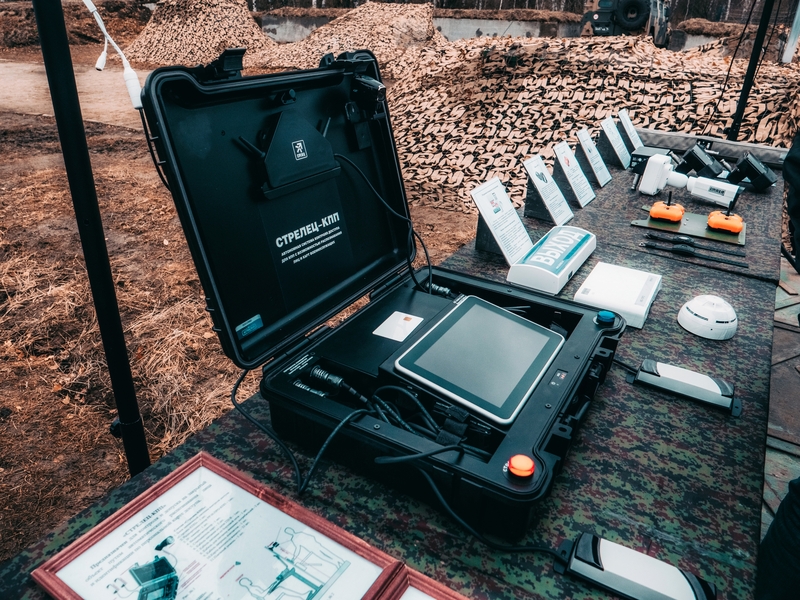Successful Russian electronic warfare in Ukraine
Before the war in Ukraine started, Western experts considered Russian electronic warfare capabilities very potent. During the full-scale war, the Russian armed forces showed us that this consideration was not a mistake. Russians are capable of disrupting GPS signals and jamming important weapons systems.
It is now very likely that Russian electronic warfare systems are capable of jamming not only GMLRS, but Excalibur artillery rounds, Joint Direct Attack Munition (JDAM) precision-guided bombs, and novel weapon developed only with the connection with war in Ukraine by the US defense companies.

Dubbing the weapon a game changer, many in the West believed that HIMARS could turn the tide of the war in Ukraine. Unfortunately, Russian electronic warfare specialists found a way to jam HIMARS GMLRS rockets. Although there are certain ways to overcome Russian jamming, Ukrainian artillerymen have to take into account the fact that some GMLRS miss their target so that they have to use more rockets to hit one target and spend scarce precision-guided missiles. This could also contribute to Russian tactics to exhaust and grind Ukrainian (and the Western) resources.
Russian electronic warfare specialists are also capable of jamming and GPS-spoffing of seekers of JDAM bombs which are released from Ukrainian Su-27 and MiG-29 fighter jets. This also complicates Ukrainian offensive attempts.
One of the most challenging aspects regarding Russian jamming and GPS-spoofing is Russian capabilities to degrade valuable GPS-guided Excalibur artillery rounds. Effectiveness of these artillery rounds reportedly dropped from 70 to only 6 per cent. Apart from the fact itself, this puts Ukrainian artillerymen under additional pressure due to the general scarcity of artillery ammunition.
Apart from HIMARS GMLRS, JDAM bombs, and Excalibur artillery shells, there is also another weapon system that was reportedly degraded and rendered ineffective by Russian electronic warfare means. It is not known which weapon system this could be, but the news from the US hinted that it could be a ground-launched variant of previously air-launched-only weapons. This could point to the ground-launched Small Diameter Bomb (GLSDB) launched from HIMARS launched. This weapon was developed as part of the Pentagon short-term program for Ukraine to develop a new weapons system from currently available weapons. As the name of the weapon hints, it is a Small Diameter Bomb launched previously from air, adjusted to be ground-launched from M142 HIMARS or M270 which were supplied to Ukraine as a part of military aid packages both from the US and European countries. GLSDB has a range of 150 kilometers. However, according to Bill LaPlante, Under Secretary of Defense for Acquisition and Sustainment, it seems that the US, with the best intentions, rushed the weapon to the Ukrainian battlefield and this weapon did not undergo proper testing, and Ukrainian soldiers were not properly trained for this weapon. As previously mentioned in this article, Russian electronic warfare specialists are able to spoof and jam significant number of US-made weapons systems. It is also very likely that this difficult electromagnetic environment also caused (together with other aforementioned aspects) troubles with deploying GLSBD. It is also worth noting that, compared to other weapons delivered to Ukraine, there are no pictures or videos of GLSDB launches. There are also few pictures of remains of tail section of the GLSDB from which one can conclude that these weapons were actually used. However, it is not known to what extent or how many GLSDB Ukraine has at its disposal.
On the other hand, the US defense companies offered a quick cure. The SARA Company is delivering and integrating advanced search for JDAM-ERs that could turn this weapon into a hammer against Russian GPS jammers. However, it is questionable whether the US can deliver enough of these seekers (and bombs, of course) to the Ukrainian Air Force.
In general, the latest experience and evidence from Ukraine about Russian electronic warfare capabilities should be a wake-up call for European countries. Russian electronic warfare capabilities proved their potency in an interstate armed conflict against western weapon systems which, as many assumed in the West, are superior to their Russian counterparts.








